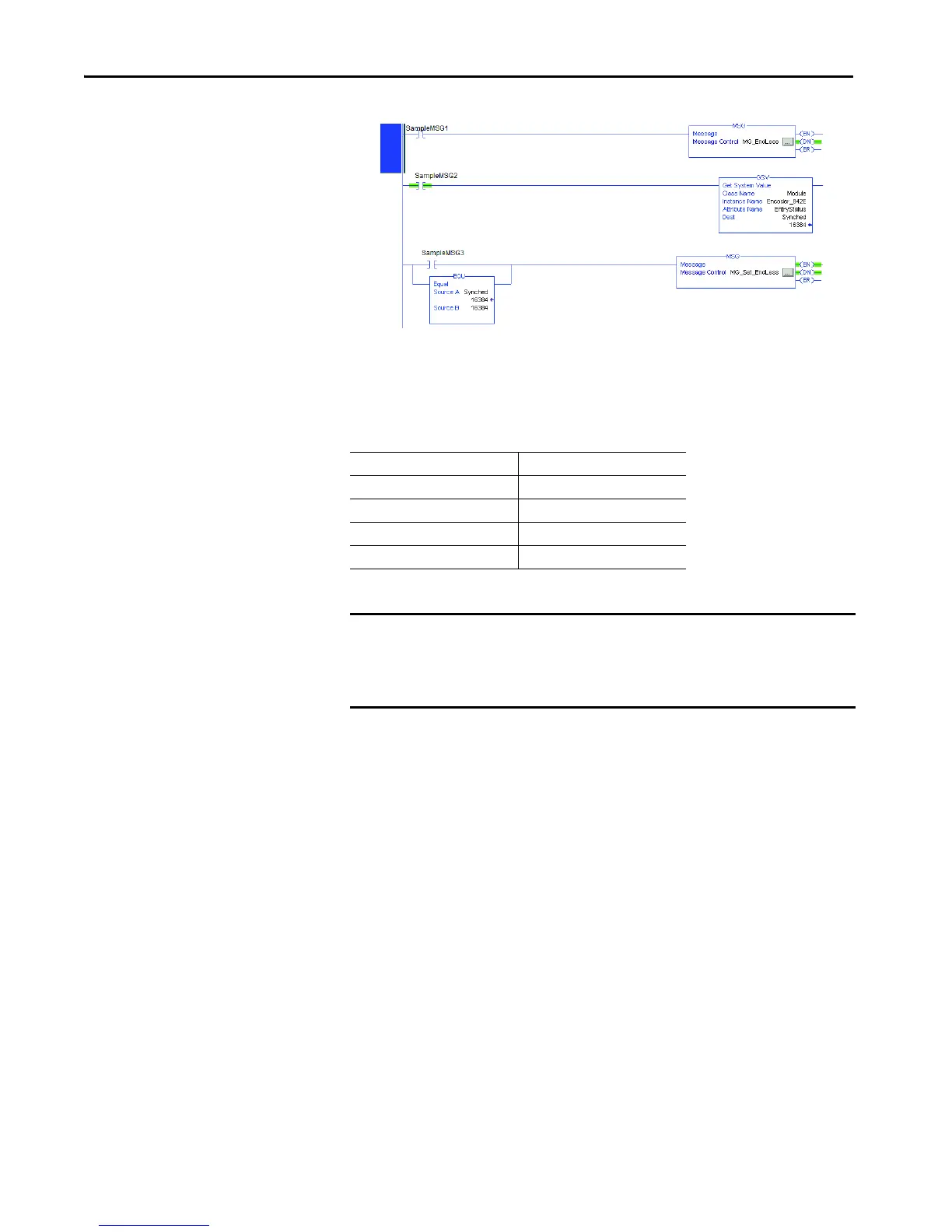24 Rockwell Automation Publication 842E-UM001C-EN-P - September 2016
Chapter 3 EtherNet/IP Overview
Figure 12
Features
CIP Object Model
EtherNet/IP uses an object model for network communication wherein all
functions and data of a device are defined. The important terms are as follows:
Class: A class contains related objects of a device, which is organized in
instances.
Instance: An instance consists of different attributes that describe the
properties of the instance. Different instances of a class have the same services,
the same behavior, and the same attributes. They can, however, have different
values.
Attribute: The attributes represent the data that a device provides over
EtherNet/IP. The attributes include the current values of, for example, a
configuration or an input. Typical attributes are configuration and status
information.
Service: Services are used to access classes or the attributes of a class or to
generate specific events. These services execute defined actions such as reading
the attributes.
Attribute 14 (e hex) Scaling Function Control (SFC)
Attribute 125 (7d hex) Endless Shaft Functionality (ESF)
Attribute 126 (7e hex Nominator (CNR_N)
Attribute 127 (7f hex)– Divisor (CNR_D)
Attribute 17 (11 hex) Total Measuring Range (CMR)
IMPORTANT Don’t make online scaling changes through the module profile unless the
encoder device is inhibited. When you execute online changes, an error
message is displayed; “Failed to modify properties. Failed to send
configuration data to the module.” Consequently changes are ignored.
